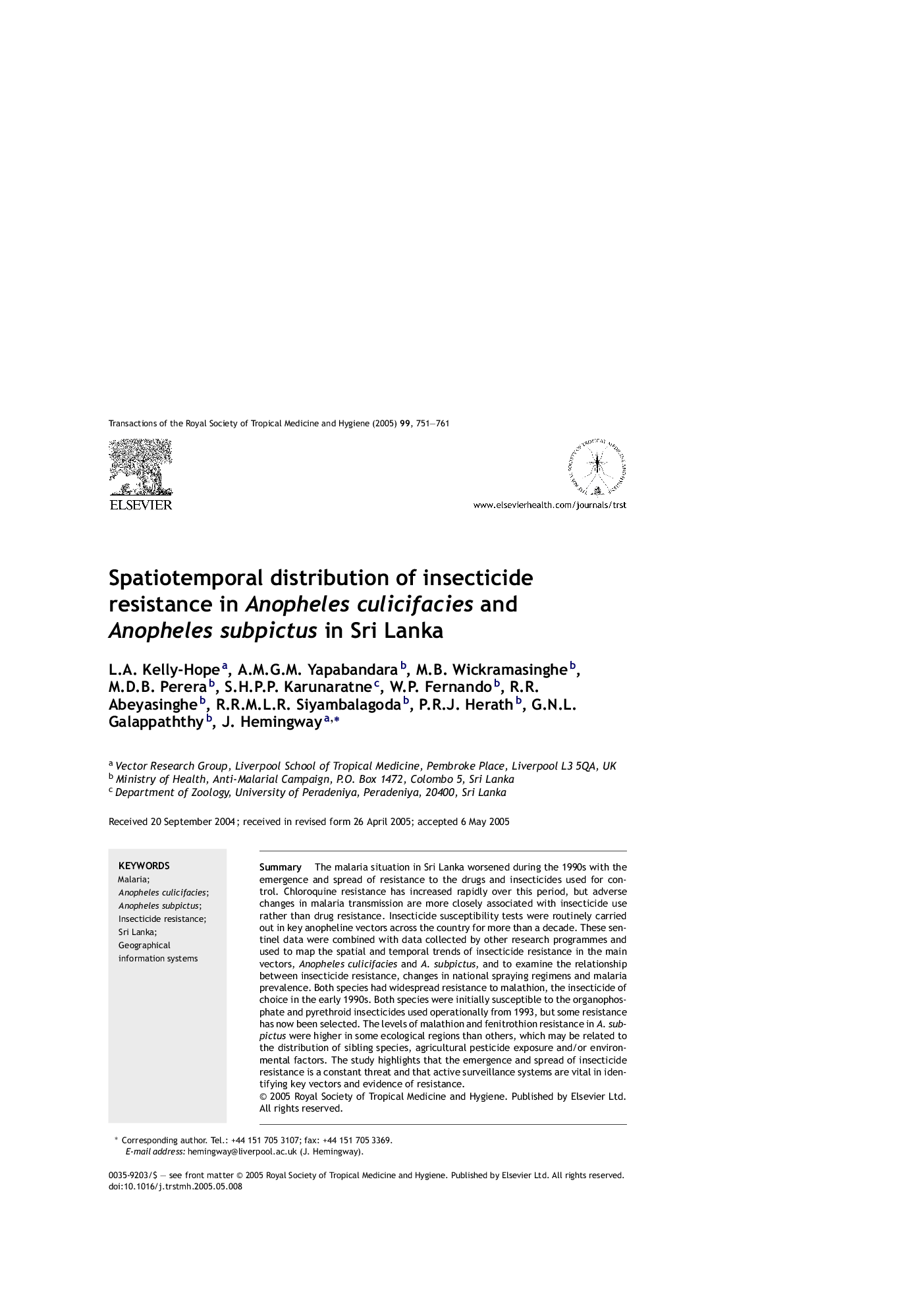| Article ID | Journal | Published Year | Pages | File Type |
|---|---|---|---|---|
| 10030518 | Transactions of the Royal Society of Tropical Medicine and Hygiene | 2005 | 11 Pages |
Abstract
The malaria situation in Sri Lanka worsened during the 1990s with the emergence and spread of resistance to the drugs and insecticides used for control. Chloroquine resistance has increased rapidly over this period, but adverse changes in malaria transmission are more closely associated with insecticide use rather than drug resistance. Insecticide susceptibility tests were routinely carried out in key anopheline vectors across the country for more than a decade. These sentinel data were combined with data collected by other research programmes and used to map the spatial and temporal trends of insecticide resistance in the main vectors, Anopheles culicifacies and A. subpictus, and to examine the relationship between insecticide resistance, changes in national spraying regimens and malaria prevalence. Both species had widespread resistance to malathion, the insecticide of choice in the early 1990s. Both species were initially susceptible to the organophosphate and pyrethroid insecticides used operationally from 1993, but some resistance has now been selected. The levels of malathion and fenitrothion resistance in A. subpictus were higher in some ecological regions than others, which may be related to the distribution of sibling species, agricultural pesticide exposure and/or environmental factors. The study highlights that the emergence and spread of insecticide resistance is a constant threat and that active surveillance systems are vital in identifying key vectors and evidence of resistance.
Keywords
Related Topics
Life Sciences
Immunology and Microbiology
Applied Microbiology and Biotechnology
Authors
L.A. Kelly-Hope, A.M.G.M. Yapabandara, M.B. Wickramasinghe, M.D.B. Perera, S.H.P.P. Karunaratne, W.P. Fernando, R.R. Abeyasinghe, R.R.M.L.R. Siyambalagoda, P.R.J. Herath, G.N.L. Galappaththy, J. Hemingway,
